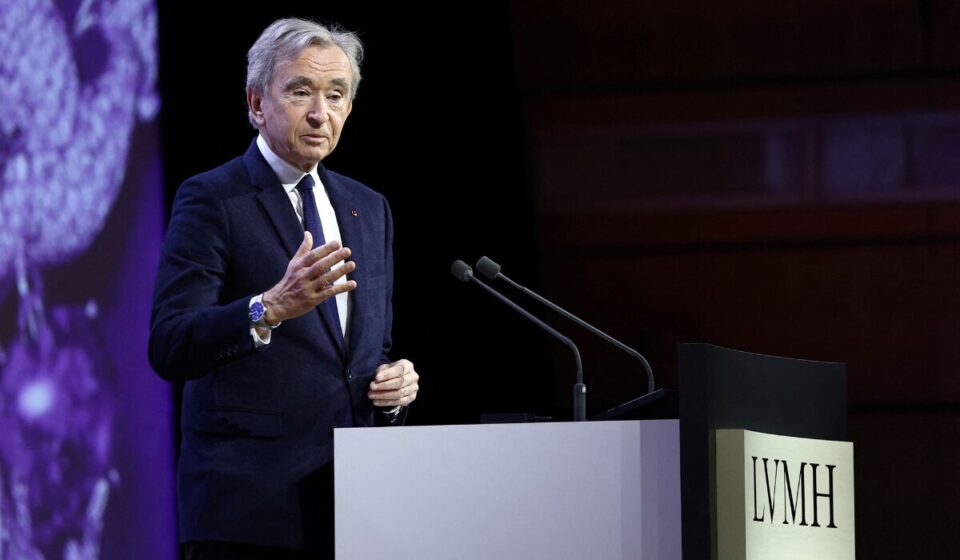LVMH Moët Hennessy Louis Vuitton, the world’s leading luxury goods conglomerate, reported a strong start to 2025 but warned of a performance decline beginning in March, according to CEO Bernard Arnault. The slowdown, announced on April 18, reflects broader challenges in the luxury sector, as economic headwinds dampen demand for iconic brands like Louis Vuitton, Dior, and Tiffany & Co.
A Tale of Two Quarters
LVMH, headquartered in Paris, enjoyed robust growth in early 2025, driven by strong sales in key markets such as Asia and Europe. The company’s portfolio, spanning fashion, jewelry, wines, and spirits, benefited from pent-up demand and brand loyalty among high-net-worth consumers. However, Arnault highlighted that performance began to falter in March, as global economic conditions deteriorated. Rising inflation, weakening consumer confidence, and persistent supply chain disruptions have curbed spending on luxury goods, even among affluent buyers.
Why the Slowdown?
The luxury sector is particularly sensitive to economic shifts, and LVMH’s challenges mirror industry-wide struggles. Inflation has squeezed discretionary spending, with consumers prioritizing essentials over high-end purchases. Geopolitical tensions, including U.S.-China trade tariffs, have disrupted supply chains, raising costs for raw materials like leather and precious metals used in LVMH’s products. Additionally, a slowdown in China—a critical market for luxury goods—has further pressured sales, as economic uncertainty and regulatory changes weigh on consumer sentiment.
Arnault noted that the decline is not unique to LVMH, with competitors like Kering (Gucci) and Richemont (Cartier) also reporting softening demand. The luxury market, once seen as recession-resistant, is now navigating uncharted territory as global economic growth slows.
LVMH’s Response Strategy
To counter these challenges, LVMH is doubling down on cost efficiency and digital innovation. The company is streamlining operations to reduce overheads, particularly in manufacturing and logistics, while maintaining its commitment to craftsmanship. On the digital front, LVMH is investing heavily in e-commerce platforms and personalized marketing to capture younger, tech-savvy consumers. Initiatives like virtual try-ons for jewelry and immersive online experiences for fashion collections aim to bolster engagement in a competitive market.
Arnault emphasized a cautious but proactive outlook, stating, “While the current environment poses challenges, LVMH’s strength lies in its ability to adapt and innovate. We are focused on delivering exceptional value to our customers.” The company is also exploring new markets in the Middle East and Southeast Asia to offset weaker performance in traditional strongholds.
What’s Next for Luxury Retail?
LVMH’s update signals a pivotal moment for the luxury goods industry. Analysts predict that the sector may face a prolonged period of subdued growth unless economic conditions stabilize. The reliance on high-net-worth consumers, while a strength, leaves companies like LVMH vulnerable to shifts in wealth dynamics and global trade policies. Moreover, sustainability pressures are prompting luxury brands to rethink sourcing and production, adding complexity to their operations.
For investors, LVMH’s cautious outlook may temper expectations, though its diversified portfolio and strong brand equity provide a buffer. The company’s shares, traded on the Euronext Paris, have been volatile in 2025, reflecting broader market uncertainty. As LVMH navigates these challenges, its ability to balance heritage with innovation will be critical to maintaining its dominance.
A Broader Industry Signal
LVMH’s performance dip underscores the luxury sector’s vulnerability to macroeconomic forces. For consumers, it may mean fewer blockbuster product launches or higher prices as brands pass on rising costs. For the industry, it’s a call to rethink strategies in an era of economic and geopolitical flux. As LVMH charts its path forward, the luxury market watches closely, knowing that its moves often set the tone for high-end retail worldwide.


